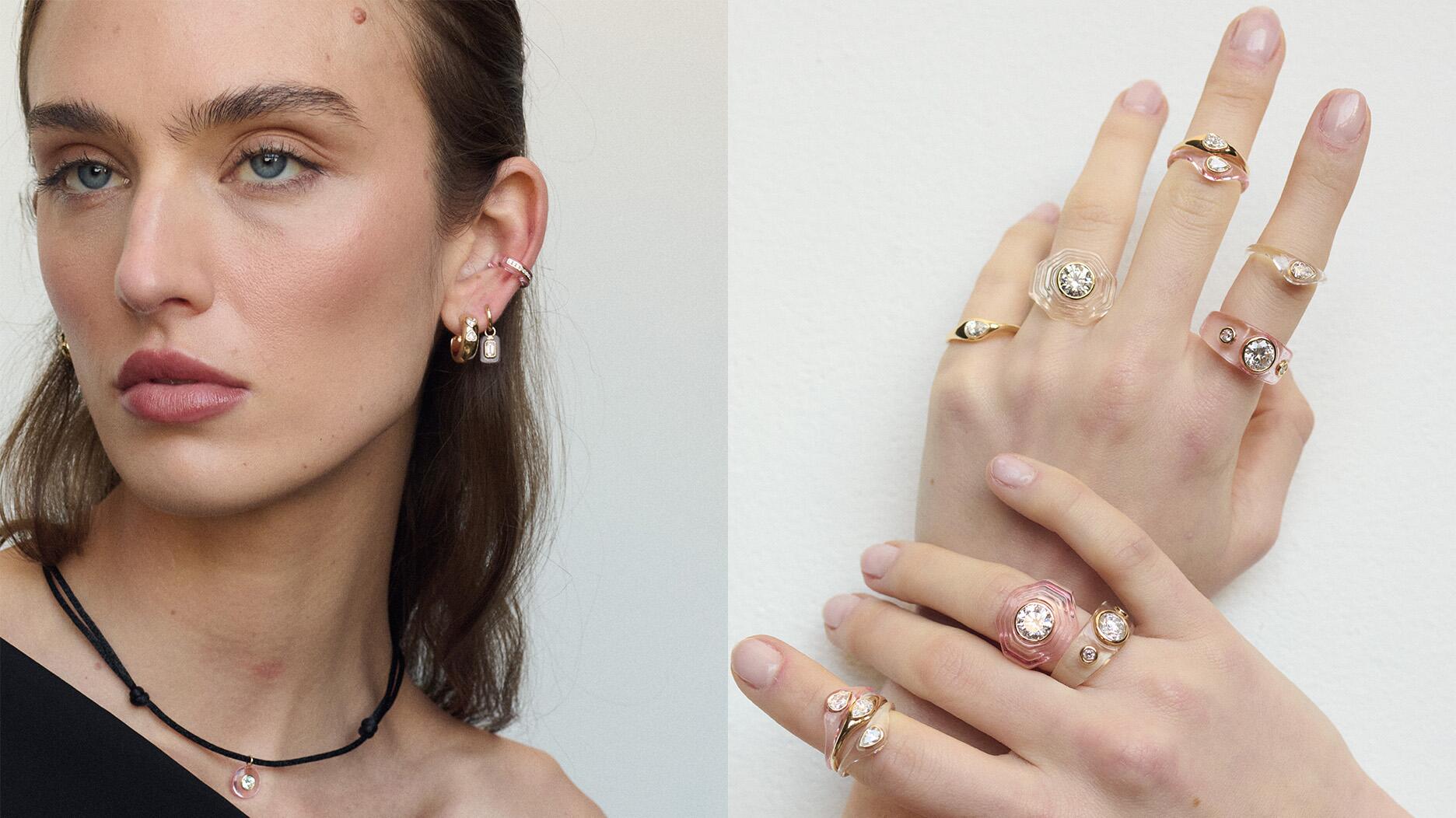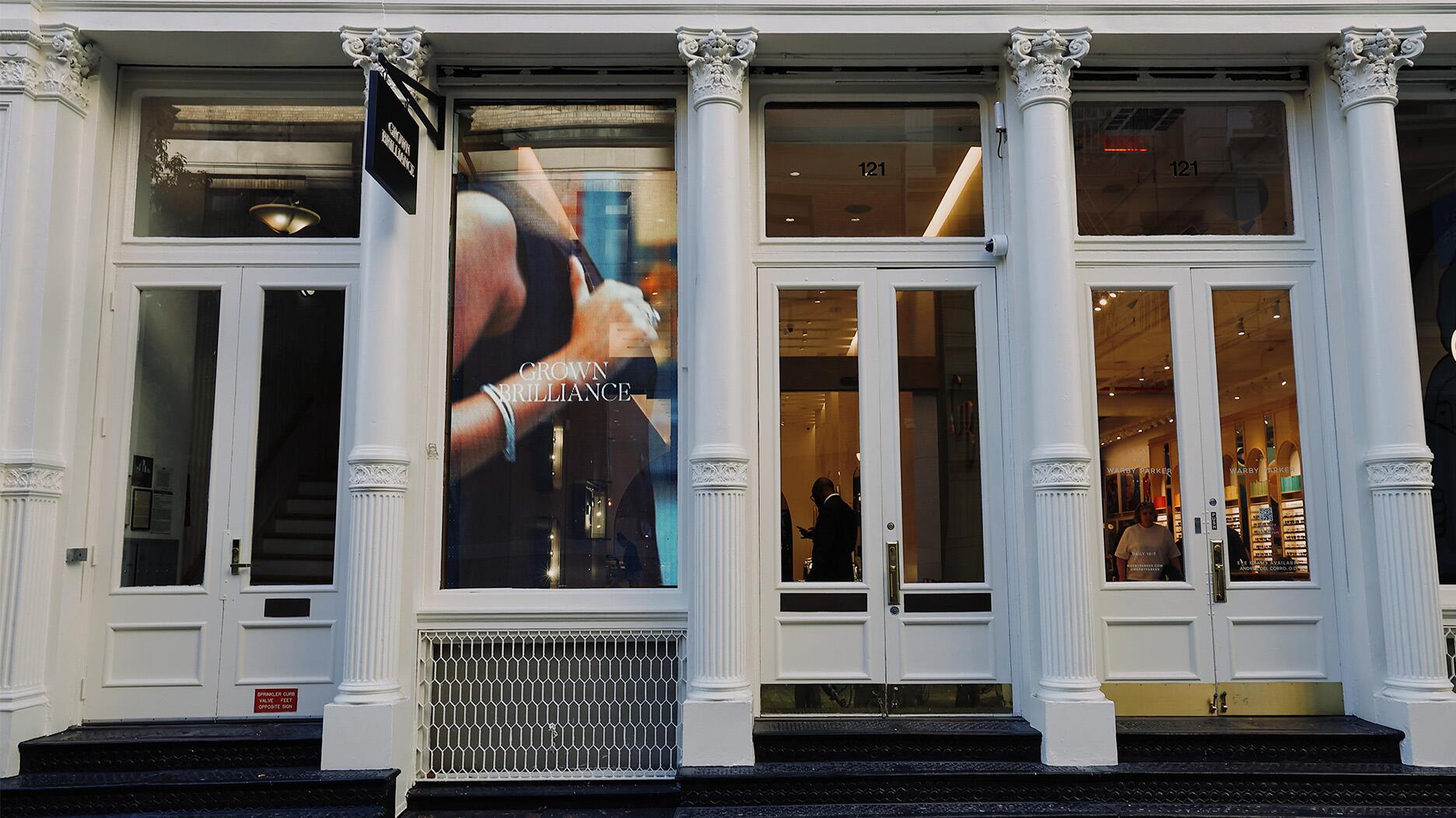Lightbox to Go Dark by Summer, De Beers Says
The company plans to halt all consumer-facing activity this summer, while Lightbox factory operations will cease by the end of the year.

In a statement issued Thursday, the diamond miner and marketer said the closure was intended to reinforce its commitment to the idea that natural diamonds are for jewelry, while lab-grown diamonds are for industrial and technological applications.
“Back in 2018, when we started Lightbox, synthetics were selling for thousands of dollars, almost as much as natural diamonds. Lightbox offered them for a groundbreaking, honest, low price,” De Beers CEO Al Cook wrote Friday in a post on LinkedIn.
“Today, as The New York Times points out, you can buy them for $299 in a supermarket,” he wrote, referencing an article titled “Would You Buy Your Diamond Engagement Ring at Walmart?” the newspaper published Thursday.
(People actually will buy their engagement ring at Walmart, and they buy a lot of other jewelry there too. The company ranks No. 2 on National Jeweler’s latest $100 Million Supersellers list.)
Cook’s LinkedIn post continued, “If you want something fun, sparkly and low cost, go right ahead! If you want to mark the most special moments in your life, do it with a gem that is ancient, rare, and unique—natural diamonds have been the symbol of love for hundreds of years.”
A De Beers spokesperson said the company expects to conclude all of Lightbox’s consumer-facing activity sometime this summer and shut down Lightbox operations at the company’s purpose-built factory in Gresham, Oregon, by the end of the year.
The Lightbox factory will then transition to fully becoming an Element Six facility, playing a “key role” in the company’s business.
Element Six is part of De Beers Group and grows diamonds used for industrial and technological purposes.
The company has offices/manufacturing facilities in seven locations worldwide: Oxford and Ascot in the United Kingdom; Shannon, Ireland; Burghaun, Germany; Springs, South Africa; Santa Clara, California; and the facility in Gresham.
De Beers sent shockwaves through the industry when it introduced Lightbox at JCK Las Vegas in 2018, selling the brand’s lab-grown diamond fashion jewelry online direct to consumers and, later, via partnerships with both major and independent retailers.
When Lightbox came online, it was priced at $800 per carat, a move intended to make consumers understand how little it costs to produce a lab-grown diamond and to differentiate the product from natural diamonds.
Lightbox was positioned as jewelry for less-special special occasions, like Sweet 16s and high school graduations, not for life’s major moments, like weddings and milestone anniversaries.
In the seven years since the brand launched, lab-grown diamond prices have dropped precipitously while natural diamond sales have struggled in the past couple years, due in part to competition from lab-grown stones.
At JCK Las Vegas 2024, De Beers announced it would no longer grow diamonds for jewelry, though Cook said at that time that Lightbox would live on as a brand, telling National Jeweler, “[Lightbox] will continue to sell fun, fashionable lab-grown diamond jewelry.
“They’ll play a role in the industry in setting good, honest pricing and increasingly I think people will respect that role.”
Lightbox even underwent a rebranding in fall 2024, introducing a new logo, tagline, website, and packaging, as well as two new small jewelry collections.
Ultimately, though, De Beers decided not to continue with the lab-grown diamond jewelry business, noting in last week’s announcement, “The evolution of lab-grown diamond values in the jewelry sector underpins De Beers Group’s core belief in rare, high-value, natural diamond jewelry as a separate category from low-cost, mass-produced lab-grown jewelry.”
De Beers said shutting down Lightbox will allow it to funnel more money into marketing natural diamonds.
As part of the closure, the company said it is discussing the sale of “certain assets” of the Lightbox business with potential buyers.
A company spokesperson said it is primarily inventory that will be up for sale, a mix of polished loose lab-grown diamonds as well as some jewelry.
“As we move towards becoming a standalone company, we continue to optimize our business, reduce costs, and build a focused De Beers that is positioned for profitable growth,” Cook said.
“Overall, we expect both the cost and price of lab-grown diamonds to fall further in the jewelry sector. The planned closure of Lightbox reflects our commitment to natural diamonds. We are also excited at the growing commercial potential for synthetic diamonds in the technology and industrial space.”
The Latest

The filmmaker’s personal F.P. Journe “FFC” prototype was the star of Phillips’ recent record-setting watch auction in New York.

The new location in the Design District pays homage to Miami’s Art Deco heritage and its connection to the ocean.

Inflations, tariffs, and politics—including the government shutdown—were among consumers’ top concerns last month.

How Jewelers of America’s 20 Under 40 are leading to ensure a brighter future for the jewelry industry.

“Longtime favorite” presenters, as well as first-time speakers, will lead talks and workshops at the annual event in Tucson next year.


Silas Smith of Meridian Metalworks won the challenge with his pendant that blends Australian and American landscapes.

The sale of the 31.68-carat, sunset-hued stone was part of Sotheby’s first series of events and auctions in Abu Dhabi.

Roseco’s 704-page catalog showcases new lab-grown diamonds, findings, tools & more—available in print or interactive digital editions.

Most customers who walk into your store this month have made up their minds. Your job is to validate their choice, Emmanuel Raheb writes.

The collection features characters and motifs from Ukrainian folklore, including an enchanted mirror and a magic egg.

MatrixGold 3.11, the newest version of the jewelry design program, offers more flexibility, precision, and creative control.

The pavilion will be part of the 2026 JA New York Spring show, scheduled for March 15 to 17.

Kadet, a 1994 National Jeweler Retailer Hall of Fame inductee, helped grow the family-owned retailer in the Chicago area and beyond.

Billed as the world’s smallest wearable, Lumia Health’s new smart earrings have a health tracker subtly embedded in the back.

Don’t let those with December birthdays feel blue. Help them celebrate their month with blue zircon, turquoise, and tanzanite.

The new pink sapphire version of the piece dances with its wearer in the brand’s “Icons After Dark” holiday campaign.

A choice that’s generated a lot of commentary, Pantone says “Cloud Dancer” marks a fresh start and encourages relaxation and creativity.

The manufacturer’s holiday campaign features a gift guide filled with trending designs and jewelry that can be personalized.

The man was charged with theft, accused of ingesting the necklace while in a jewelry store in Auckland, New Zealand.

The Florida independent expanded its store from 8,000 to 14,000 square feet, fulfilling the vision of its late co-founder, Jim Dunn.
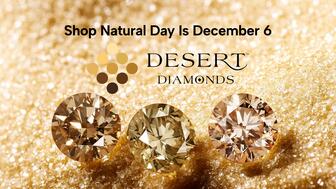
Sponsored by De Beers Group

The classic 5600 series G-Shock has been scaled down to about a tenth of its size, becoming a fully functioning watch ring.

The association’s annual conference and gala will take place Feb. 4, 2026, during the Tucson gem shows.

The January show will include a workshop for jewelry retailers on implementing AI to strengthen their businesses.
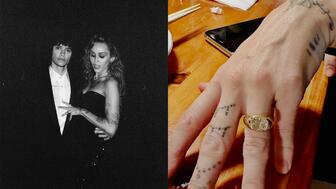
Fellow musician Maxx Morando proposed to the star with a chunky, cushion-cut diamond ring designed by Jacquie Aiche.
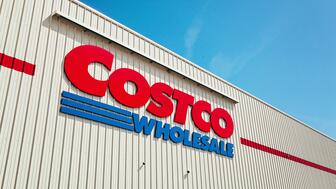
The retailer, which sells billions in fine jewelry and watches, is suing the Trump administration and U.S. Customs and Border Patrol.
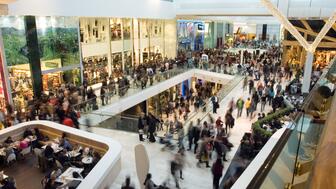
Black Friday is still the most popular shopping day over the five-day holiday weekend, as per the National Retail Federation’s survey.














